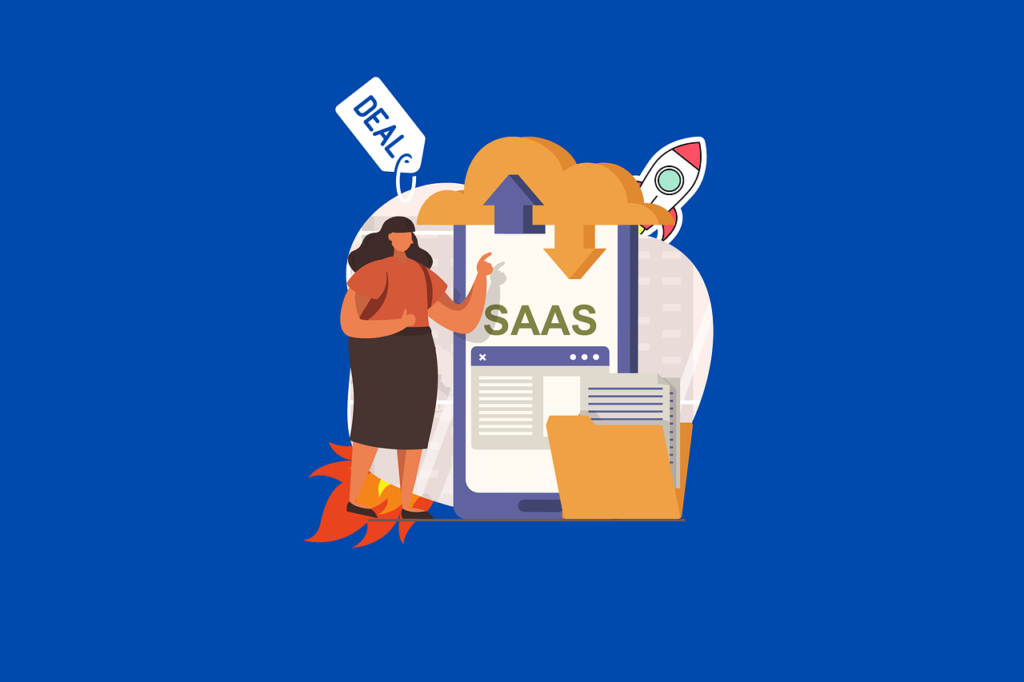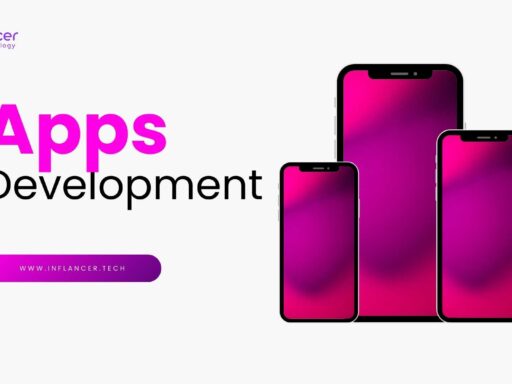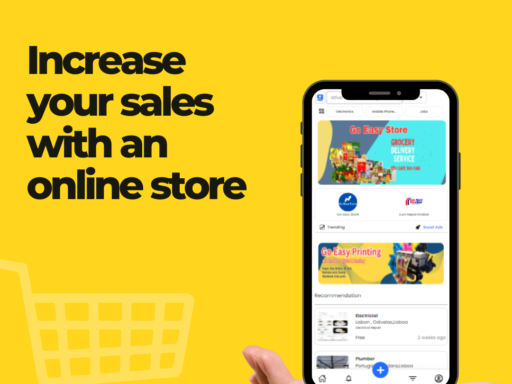Over the last decade, the Software as a Service (SaaS) industry has witnessed remarkable growth. Transform your SaaS business with Inflancer Technology. Discover how our scalable solutions can enhance your cloud-based services and drive significant growth. The shift to cloud computing, combined with the increasing need for remote collaboration, has driven the demand for SaaS solutions to unprecedented levels. Companies like Zoom and Microsoft Teams have become essential tools for businesses worldwide, exemplifying the scalability and potential of SaaS products.
As a result, many entrepreneurs are keen on entering the SaaS space, eager to capitalize on this booming market. However, while having a unique SaaS idea or a detailed business plan is essential, the cornerstone of any successful SaaS venture lies in its business model. This model is not just a blueprint for your operations but a roadmap for profitability, sustainability, and resilience in a constantly evolving digital landscape.

What is a SaaS Business Model?
At its core, a SaaS business model outlines how a SaaS company plans to create, deliver, and capture value through its software offerings. Unlike traditional software, which is sold as a one-time purchase and installed on individual devices, SaaS products are hosted in the cloud and accessed via the internet. This model typically involves recurring revenue streams, usually in the form of subscription fees, which provide a steady cash flow for the business.
However, the SaaS business model is not without its challenges. It requires a deep understanding of customer needs, continuous product improvement, and a robust infrastructure to support high availability and performance. This is where Inflancer Technology excels. With our expertise in Web Development, App Development, DevOps, DevSecOps, SEO, Digital Marketing, and Quality Assurance, we help SaaS companies build, scale, and maintain platforms that meet and exceed market expectations.
Exploring the Types of SaaS Business Models
There is no one-size-fits-all approach to SaaS business models. Instead, various models exist, each suited to different types of products, markets, and customer segments. Below are some of the most common SaaS business models that you might consider for your venture:
1. Subscription-Based Revenue Model
The subscription-based model is the most widely used in the SaaS industry. Customers pay a recurring fee—monthly, quarterly, or annually—to access the software. This model offers several benefits, including predictable revenue, improved customer retention, and the ability to offer ongoing updates and support.
At Inflancer Technology, we help you design a subscription model that aligns with your target market’s needs. We can assist in determining the optimal pricing tiers, deciding on billing cycles, and ensuring that your subscription model is both competitive and profitable.
2. Freemium Model
The freemium model allows users to access a basic version of the software for free, with the option to upgrade to a paid version that offers additional features or capabilities. This model is effective for building a large user base quickly, as the low barrier to entry encourages widespread adoption.
However, converting free users to paying customers is crucial for the success of this model. Inflancer Technology can help you optimize your freemium model by identifying the features most likely to drive conversions, implementing effective upsell strategies, and using data analytics to monitor user behavior and engagement.
3. Pay-As-You-Go Model
The pay-as-you-go model charges customers based on their actual usage of the software. This model is particularly popular among cloud service providers like AWS, Microsoft Azure, and Google Cloud Platform. It offers flexibility to customers who only pay for what they use, making it an attractive option for businesses with fluctuating needs.
Implementing a pay-as-you-go model requires precise tracking and billing systems. At Inflancer Technology, we ensure that your SaaS platform is equipped with the necessary tools to monitor usage accurately, generate detailed invoices, and manage customer accounts seamlessly.
4. Tiered Pricing Model
In a tiered pricing model, different pricing levels are offered, each with a distinct set of features. This allows you to cater to various customer segments, from small businesses to large enterprises, by offering packages that match their specific needs and budgets.
Designing effective pricing tiers requires a deep understanding of your market and customer base. Inflancer Technology assists you in conducting market research, analyzing competitor pricing, and creating tiers that maximize your revenue potential while delivering value to your customers.
5. Affiliate and Ad-Based Revenue Models
While less common in the SaaS space, affiliate and ad-based models can be effective for certain types of software. The affiliate model generates revenue by promoting third-party products or services, earning a commission for each sale made through your platform. The ad-based model, on the other hand, involves selling advertising space within your software to generate income.
These models require careful integration to avoid disrupting the user experience. Inflancer Technology helps you implement these revenue streams in a way that complements your primary business model, ensuring that they enhance rather than detract from your core offering.

Crafting a Robust SaaS Pricing Strategy
Pricing is a critical component of your SaaS business model, directly impacting customer acquisition, retention, and overall profitability. A well-thought-out pricing strategy not only positions your product competitively in the market but also reflects the value it delivers to customers.
Key Pricing Strategies for SaaS Businesses
- Flat Rate Pricing: A single price for all users, making it simple and transparent. Ideal for straightforward products with a broad appeal.
- Tiered Pricing: Multiple pricing levels based on the features or usage limits. This strategy allows you to serve different customer segments effectively.
- Per-User Pricing: Charges based on the number of users or seats. Common in B2B SaaS, where companies pay more as their teams grow.
- Usage-Based Pricing: Also known as pay-as-you-go, where customers are billed according to their actual usage, providing flexibility and scalability.
At Inflancer Technology, we collaborate with you to determine the best pricing model for your SaaS business. We consider factors such as customer behavior, market conditions, and competitor pricing to help you find a pricing structure that maximizes revenue while remaining attractive to your target audience.
Distribution Channels for SaaS: Direct vs. Indirect
Choosing the right distribution channel is essential for reaching your target market and scaling your SaaS business. The two primary distribution models are:
Direct Distribution
In a direct distribution model, you sell your software directly to customers without intermediaries. This approach gives you complete control over the sales process, customer relationships, and pricing. It also allows you to gather valuable customer feedback and build a loyal user base.
Indirect Distribution
Indirect distribution involves partnering with third parties, such as resellers, app stores, or consultancies, to reach customers. This model can help you expand your market reach quickly, leveraging the networks and expertise of your partners.
Inflancer Technology can help you navigate these distribution channels, advising on the best approach based on your product, market, and business goals. Whether you choose to go direct, indirect, or a combination of both, we ensure that your distribution strategy aligns with your overall business objectives.
The Benefits of the SaaS Business Model: Why Invest in SaaS?
The SaaS business model offers numerous advantages that make it an attractive option for entrepreneurs and established businesses alike:
- Scalability: SaaS products can easily scale to accommodate growing user bases or increased demand without significant additional costs.
- Recurring Revenue: The subscription-based nature of SaaS provides a predictable and steady income stream, allowing for better financial planning and investment in product development.
- Lower Customer Acquisition Costs: With the right strategies, SaaS companies can achieve lower customer acquisition costs compared to traditional software businesses, thanks to digital marketing, viral growth, and network effects.
- Flexibility and Accessibility: SaaS products are accessible from anywhere with an internet connection, making them convenient for users and increasing their marketability.
- Continuous Improvement: SaaS products can be updated and improved in real-time, allowing companies to respond quickly to user feedback and market changes.
Monitoring Key SaaS Metrics for Business Success
To ensure your SaaS business thrives, it’s crucial to monitor key performance indicators (KPIs) that provide insights into your company’s health and growth trajectory. Some of the most important SaaS metrics include:
Churn Rate
Churn rate measures the percentage of customers who stop using your service over a given period. A high churn rate can indicate dissatisfaction or competition, making it essential to identify the underlying causes and address them promptly.
Revenue Churn
Revenue churn tracks the amount of revenue lost due to customer cancellations or downgrades. This metric is particularly important for identifying the financial impact of churn and understanding how to mitigate it.
Customer Lifetime Value (CLV)
CLV represents the total revenue a customer generates throughout their relationship with your company. A high CLV indicates that your customers find long-term value in your product, making it a key metric for assessing customer satisfaction and retention strategies.
Customer Acquisition Cost (CAC)
CAC calculates the cost of acquiring a new customer, including expenses related to marketing, sales, and onboarding. Reducing CAC while maintaining or increasing CLV is a sign of a healthy, sustainable business.
Customer Engagement Metrics
Customer engagement metrics assess how actively users interact with your product. High engagement typically correlates with higher retention rates and stronger customer loyalty. These metrics can include login frequency, feature usage, and participation in community events or support forums.
At Inflancer Technology, we provide the tools and expertise to track and analyze these metrics, helping you make data-driven decisions that drive growth and improve customer satisfaction.
Why SaaS Business with Inflancer Technology ?
At Inflancer Technology, we understand that building a successful SaaS business involves more than just a great idea. It requires a solid foundation, continuous innovation, and a deep understanding of the market. Our team of experts is here to support you at every stage of your SaaS journey:
1. Idea Validation and Market Research
Before you invest time and resources into developing your SaaS product, it’s crucial to validate your idea. Inflancer Technology helps you conduct thorough market research to ensure there’s demand for your solution. We analyze competitors, identify potential customer pain points, and validate your product’s value proposition.
2. Proof of Concept (PoC) and Prototyping
A proof of concept is a preliminary version of your product that demonstrates its feasibility. This step is essential for securing funding, attracting early adopters, and refining your idea. Inflancer Technology assists you in developing a PoC and creating a prototype that effectively showcases your product’s potential.
3. Minimum Viable Product (MVP) Development
An MVP is a simplified version of your product that includes only the core features necessary to solve the primary problem. The goal of an MVP is to gather feedback from early users and iterate on the product before launching a full version. Our team at Inflancer Technology specializes in rapid MVP development, allowing you to enter the market quickly and efficiently.
4. Full Product Development and Launch
Once your MVP has been validated and refined, it’s time to develop the full version of your product. This stage involves building out additional features, enhancing scalability, and ensuring that your software is secure and reliable. Inflancer Technology’s comprehensive services include full product development, from backend infrastructure to frontend design, ensuring that your SaaS product is ready for a successful launch.
5. Post-Launch Support and Continuous Improvement
Launching your product is just the beginning. To maintain a competitive edge, you need to continuously improve your software, add new features, and respond to customer feedback. Inflancer Technology offers ongoing support, including performance monitoring, security updates, and feature enhancements, to ensure that your SaaS product remains relevant and valuable in the market.
Conclusion: Partner with Inflancer Technology for SaaS Success
The SaaS industry is dynamic, competitive, and full of opportunities. However, building a successful SaaS business requires more than just a good idea—it demands a well-thought-out business model, a strong technical foundation, and a deep understanding of the market.
Inflancer Technology is your partner in this journey, offering the expertise and resources you need to turn your SaaS vision into reality. From idea validation to full product development and post-launch support, we’re here to help you navigate the complexities of the SaaS landscape and build a business that thrives.
Contact Inflancer Technology today to learn more about how we can support your SaaS venture and set you on the path to success.





